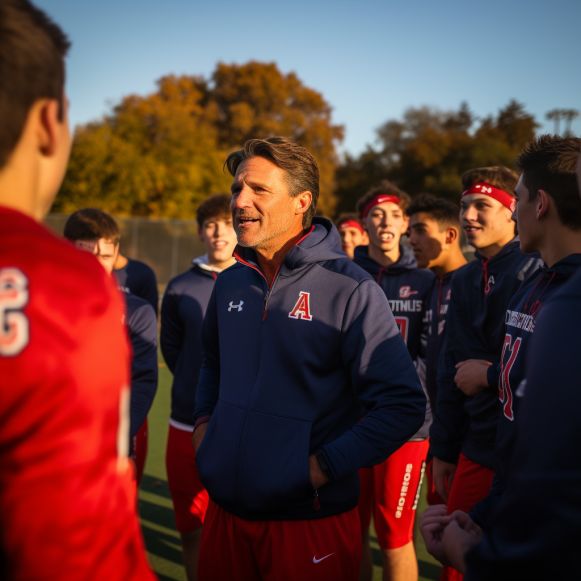Pac-12 survival: Oregon, Washington deliver death blow, leave for Big Ten; Arizona, ASU, Utah defect to Big 12
The Pac-12 Conference, home to hundreds of NCAA titles and dozens of iconic athletes and coaches, hurtled toward extinction on a momentous Friday as Oregon and Washington formally accepted invitations to join the Big Ten next summer, reducing the conference to seven schools and triggering more defections.
The list of official departures also includes Arizona, Arizona State and Utah, which are fleeing to the Big 12.
That leaves Stanford, Cal, Washington State and Oregon State behind, homeless and abandoned following the unprecedented collapse of a major football-playing conference.
“It’s tragic that it came to this,” a conference source said. “It never had to get to this point, but there were so many mistakes along the way.”
Reports surfaced Friday morning that the Huskies and Ducks — both were founding members of the conference — would accept the Big Ten’s offer.
The schools remained silent for hours as the process played out in private, but one university didn’t hesitate to speak up, as Washington State president Kirk Schulz and athletic director Pat Chun issued a statement confirming the earth-shaking news:
“We are disappointed with the recent decisions of some of our Pac-12 peers. While we had hoped that our membership would remain together, this outcome was always a possibility …”
The swift collapse of a century-old college sports institution followed commissioner George Kliavkoff’s failed attempt to secure a media rights agreement that fully satisfied the university presidents.
Five schools have left under Kliavkoff’s two-year watch, with the announced departures of USC and UCLA last summer setting the Pac-12’s demise in motion. (Colorado accepted membership in the Big 12 last week.)
Many details of the collapse have yet to be made public, but this much is certain: The upcoming college sports season will be unlike any experienced by the Pac-12, or any major conference, in the modern history of college athletics.
All 12 schools will compete for league titles and postseason appearances, just as they do every year, knowing this is the end of the conference in a recognizable form.
The Pac-12 was created in 1915 as the Pacific Coast Conference, took its modern shape in 1964 as the Pac-8 and grew into a 10-team league in 1978 with the arrival of the Arizona schools. In 2011, Colorado and Utah made it an even dozen.
But abysmal leadership by the university presidents and strategic missteps by the commissioners, Kliavkoff and his predecessor, Larry Scott, sent the conference on a path of self-destruction.
“This has been a slow-moving train wreck,” an industry source said.
Four gaffes come immediately to mind:
— Scott’s 2011 decision to create the Pac-12 Networks. The wholly-owned media company failed to meet lofty revenue projections, created financial desperation across the conference and stoked deep frustration in Los Angeles, where USC and UCLA were forced to accept a revenue structure that did not reflect their market value.
— Scott’s rejection of an offer from ESPN, in 2018, to take over control of the struggling Pac-12 Networks and sign the 12 schools to a long-term media contract. Had that deal been in place last summer, USC and UCLA would have lacked the escape hatch necessary to bolt for the Big Ten.
— The conference’s refusal to expand in the summer of 2021, shortly after Kliavkoff took charge, when the Big 12 was vulnerable to poaching after the announced departures of Texas and Oklahoma to the SEC. The Pac-12 presidents evaluated their options and determined none of the available schools would bring enough financial benefit or institutional fit. Given a second chance, the Big 12 quickly expanded and positioned itself to eventually feed on a weakened Pac-12.
— Kliavkoff’s lack of urgency in securing a media rights agreement last fall and winter. New to the college sports scene, he failed to recognize the risk of dragging out the media rights negotiations. As a result, the Pac-12 was unable to secure a deal during a prolonged stretch in which the greatest existential threat — an aggressive Big Ten, led by its media overlord, Fox — lay dormant.
After taking USC and UCLA last summer, the Big Ten presidents showed no interest in adding more West Coast schools through the winter and spring. But this week, as Kliavkoff desperately tried to finalize a media deal, the behemoth awoke.
Fox found the money to pay for the Huskies and Ducks and convinced the Big Ten presidents that the moment had arrived to deliver the death blow.
Meanwhile, on the Pac-12’s southern flank, Arizona, which values basketball above all else, is joining that sport’s best conference along with rival ASU and Utah. With membership comes the Big 12’s media agreements with Fox and ESPN and the $31.7 million annual distribution.
In contrast, Kliavkoff’s proposed media deal favored streaming (Apple) over linear television and carried less financial certainty. (The details have not been made public.)
With the Northwest football powers gone, the so-called Four Corners schools were left with no choice despite a deep sense of loyalty, especially with ASU and Utah.
What becomes of Stanford, Cal, Washington State and Oregon State?
The Bay Area schools assuredly will attempt to squeeze into the Big Ten, creating a six-team western division. If that move fails, they could compete as Independents or join the Mountain West.
Washington State and Oregon State seemingly have only the Mountain West as an option.
The Pac-12 teetered for 13 months as Kliavkoff scrambled for a media contract that would secure the future. But the end came swiftly as the ‘Conference of Champions’ dissolved into the league of ash and ruin.




